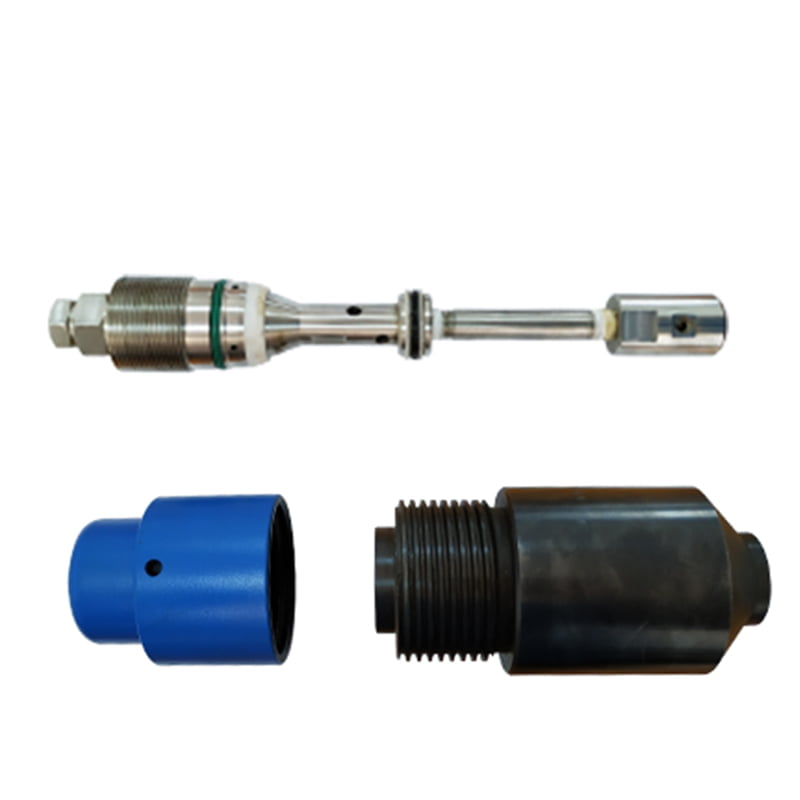Description
Chemical Injection Quill plays an important role in pipeline maintenance. The Chemical Injection system and sampler are the end devices of the Chemical Injection system or the piping medium sampling system.
| Name | High-Pressure Chemical Injection Quill | |
| Material | Stainless Steel 304, Stainless Steel 316, DSS F51, Carbon Steel A105N, and also Inconel 625 | |
| Operating Temperature | -20±120 | |
| Feature | Firstly, easy Operating | |
| Secondly, high Accuracy Long Life | ||
| At last, high Efficiency, Low cost | ||
| Payment | TT/LC | |
| Advantage | Firstly, they are lightweight and flexible. | |
| Secondly, excellent Injection efficiency. | ||
| At last, accurate location tracking. |
Sampling & Injection Point
| Model | ||||||||||||||||||||||||||||
| SI | Chemical Injection Quill SI | |||||||||||||||||||||||||||
| -Code | Plug | |||||||||||||||||||||||||||
| Pxxx | Type | Material | Sealing Material | |||||||||||||||||||||||||
| 0 | No Request | 0 | CS | 0 | No Request | |||||||||||||||||||||||
| 1 | Hollow Plug Body | 1 | 316SS | 3 | DSS | 1 | Viton O-Ring / PTFE Primary Packing | |||||||||||||||||||||
| 2 | Solid Plug Body | 2 | 316LSS | 4 | INCONEL | 2 | HNBR | |||||||||||||||||||||
| – Code | Injection Nut | |||||||||||||||||||||||||||
| Nxx | Connection Size | Material | ||||||||||||||||||||||||||
| 0 | No Request | 0 | CS | |||||||||||||||||||||||||
| 1 | 1/4″ | 1 | 316SS | 3 | DSS | |||||||||||||||||||||||
| 2 | 1/2″ | 2 | 316LSS | 4 | INCONEL | |||||||||||||||||||||||
| – Code | Injection Tube | |||||||||||||||||||||||||||
| Sxxx-Lx″ | Connection Size | Material | Nozzle | Line size(x″) | ||||||||||||||||||||||||
| 0 | No Request | 0 | CS | 0 | No Request | The most effective position for injection is generally at the center of the pipe | ||||||||||||||||||||||
| 1 | 1/4″ | 1 | 316SS | 1 | Open | |||||||||||||||||||||||
| 2 | 1/2″ | 2 | 316LSS | 2 | Quill | |||||||||||||||||||||||
| 3 | DSS | 3 | Cap & Core | |||||||||||||||||||||||||
| 4 | INCONEL | |||||||||||||||||||||||||||
| – Code | Nipple and Valve(or end Flange)of Tee | |||||||||||||||||||||||||||
| Txx | Connection Size | Material | ||||||||||||||||||||||||||
| 0 | No Request | 0 | CS | |||||||||||||||||||||||||
| 1 | 1/4″Nipple | a | 1/4″Nipple and Valve | 1 | 316SS | |||||||||||||||||||||||
| 2 | 1/2″Nipple | b | 1/2″Nipple and Valve | 2 | 316LSS | |||||||||||||||||||||||
| 3 | 3/4″Nipple | c | 3/4″Nipple and Valve | 3 | D SS | |||||||||||||||||||||||
| 4 | 1″Nipple | d | 1″Nipple and Valve | 4 | INCONEL | |||||||||||||||||||||||
| 5 | 1/4″Flange | e | 1/4″Nipple end Flange | |||||||||||||||||||||||||
| 6 | 1/2″Flange | f | 1/2″Nipple end Flange | |||||||||||||||||||||||||
| 7 | 3/4″Flange | g | 3/4″Nipple end Flange | |||||||||||||||||||||||||
| 8 | 1″Flange | h | 1″Nipple end Flange | |||||||||||||||||||||||||
| For Example: SI-P221-N12-S122-L4″-T22 SI: Sampling & Injection Assembly, P221: Solid Plug Body in 316LSS Viton O-Ring and PTFE Primary Packing N12:Injection Nut Connection Size is 1/4″and Material: 316LSS, S122:Injection Tube Connection Size is 1/4″ and Material is 316LSS. The type of nozzle is quills L4″:For 4″pipe. T22: Nipple of Tee Connection Size is 1/2″, Nipple Material: 316LSS | ||||||||||||||||||||||||||||
Introduction
As the name suggests, a chemical injection quill is an instrument designed to help move treatment chemicals into a process stream. Which is basically the flow of process media. Adding chemicals is an important part of many industrial processes. Because it lets people precisely control both the amount of chemicals added and the exact point at which they are added.
So what this device basically does is make sure that the right amount of treatment chemicals are added at the right time and place in the process stream so that they work best. This level of accuracy is very important for many industrial processes to work well. Because it lets process controllers keep an eye on chemical reactions, process conditions, and the overall system’s integrity and efficiency.



Reviews
There are no reviews yet.